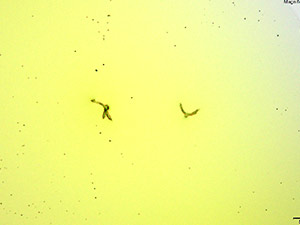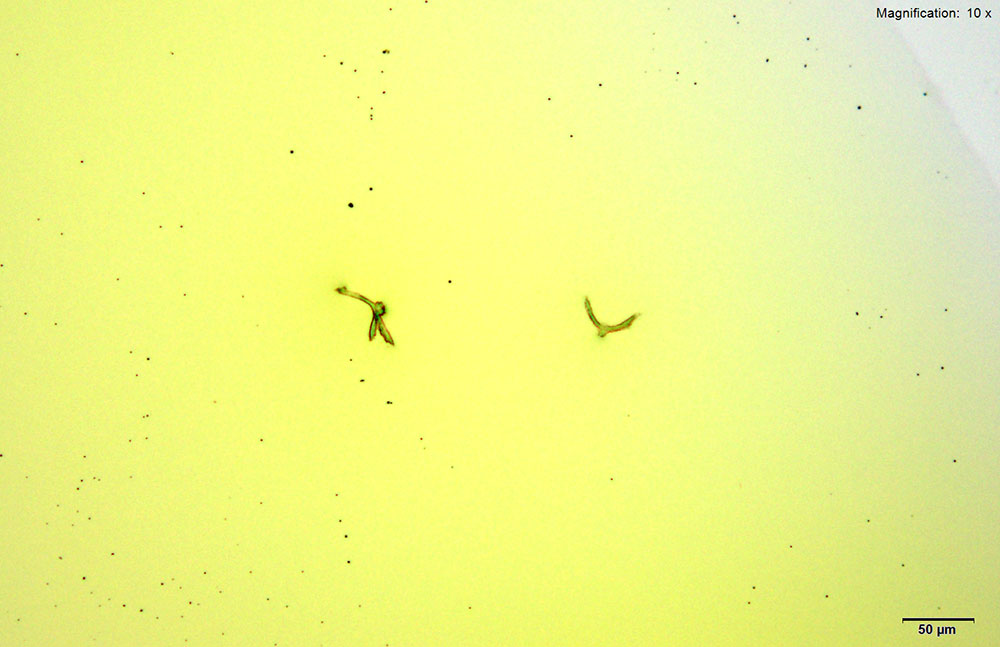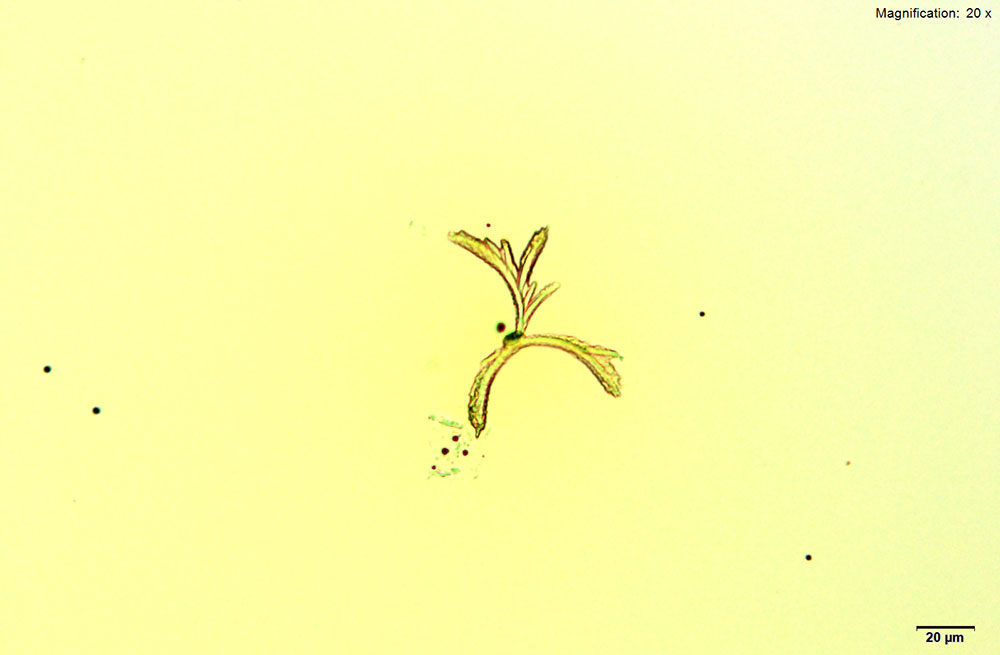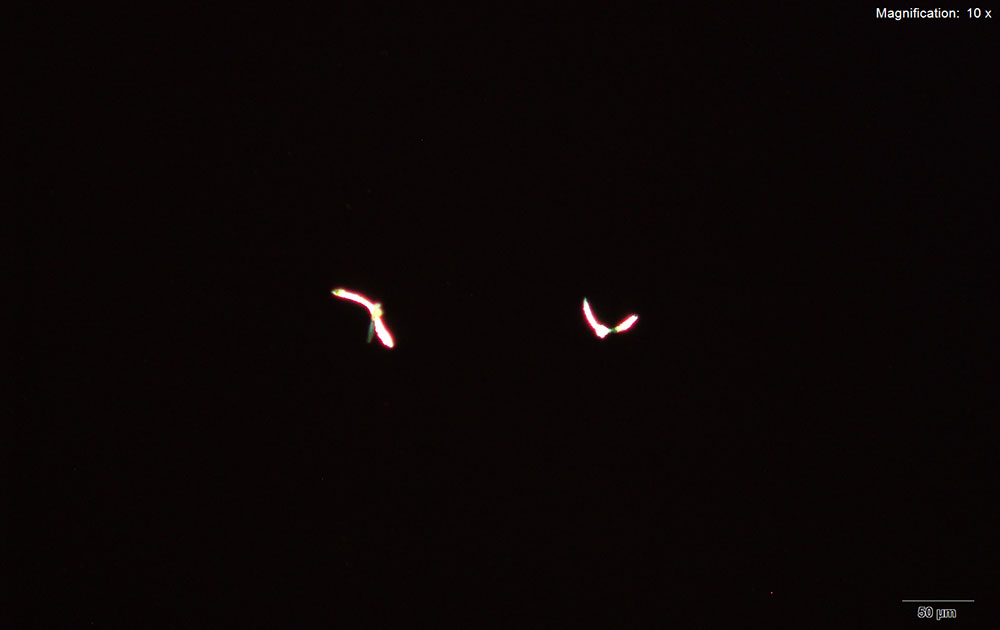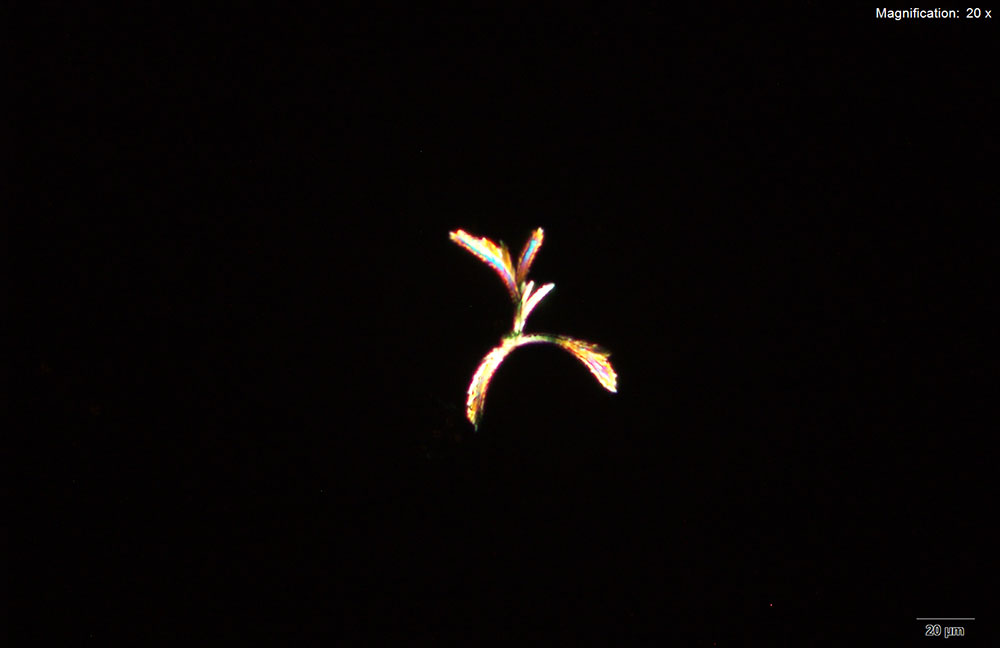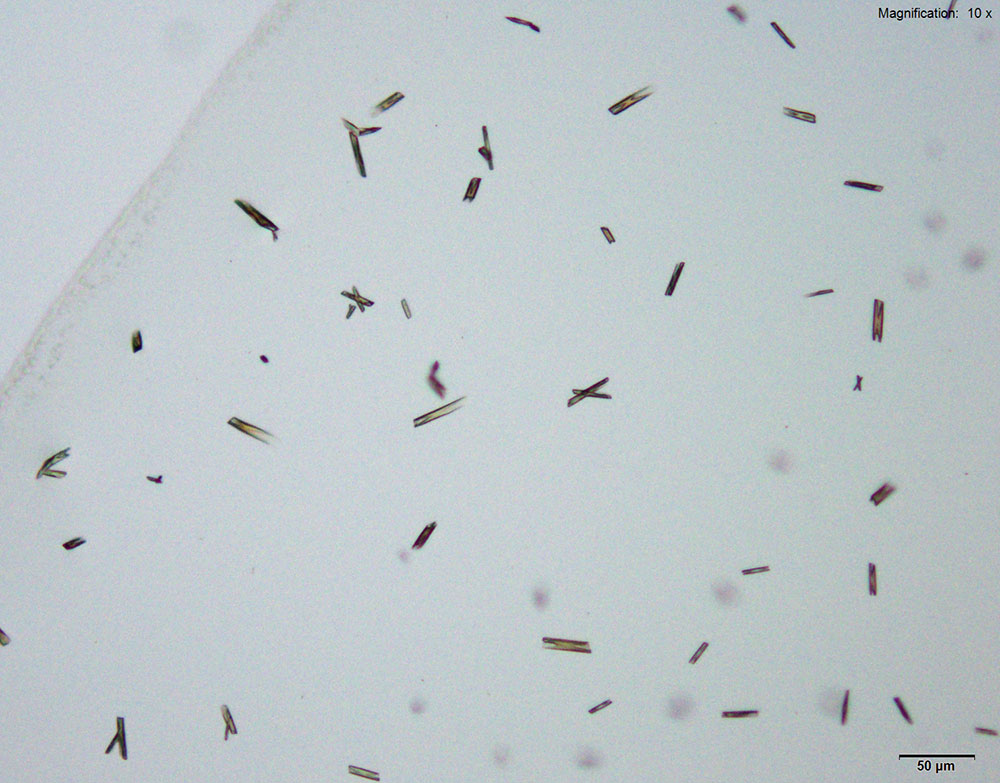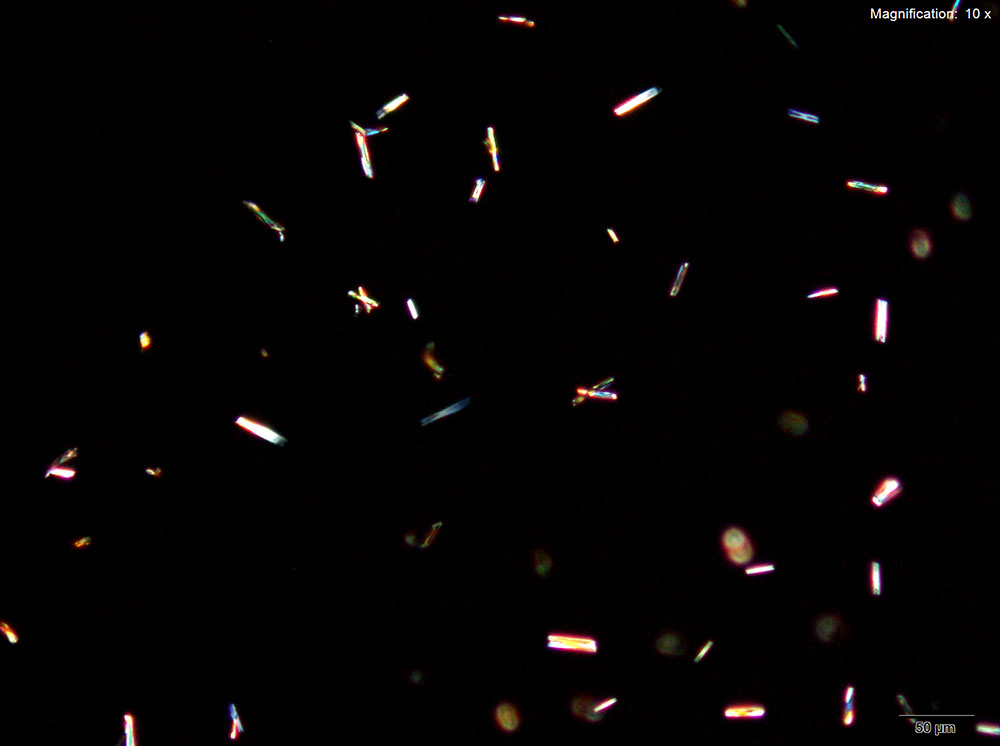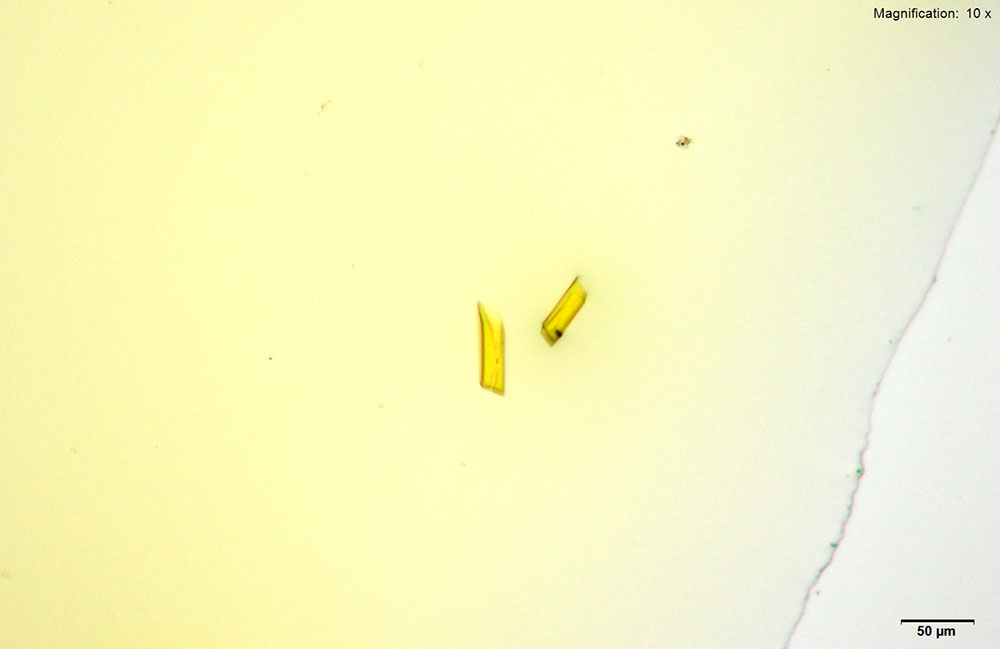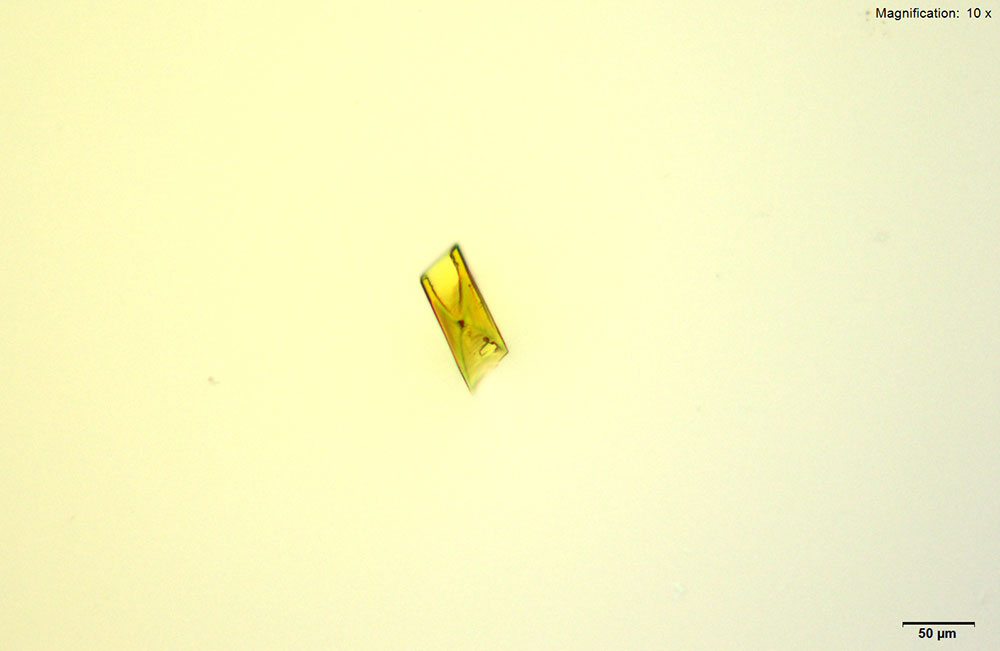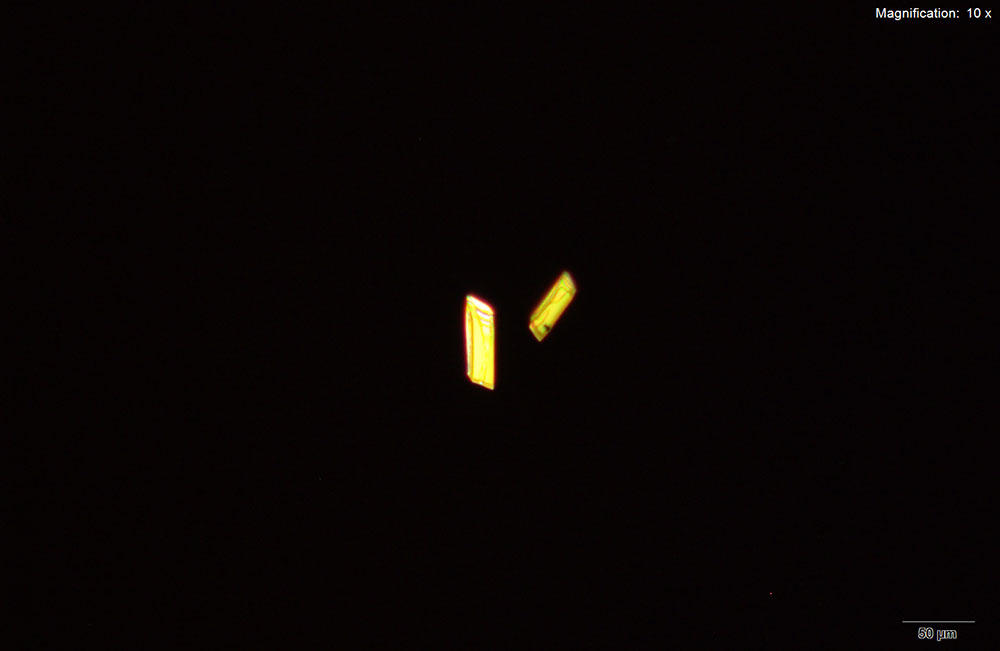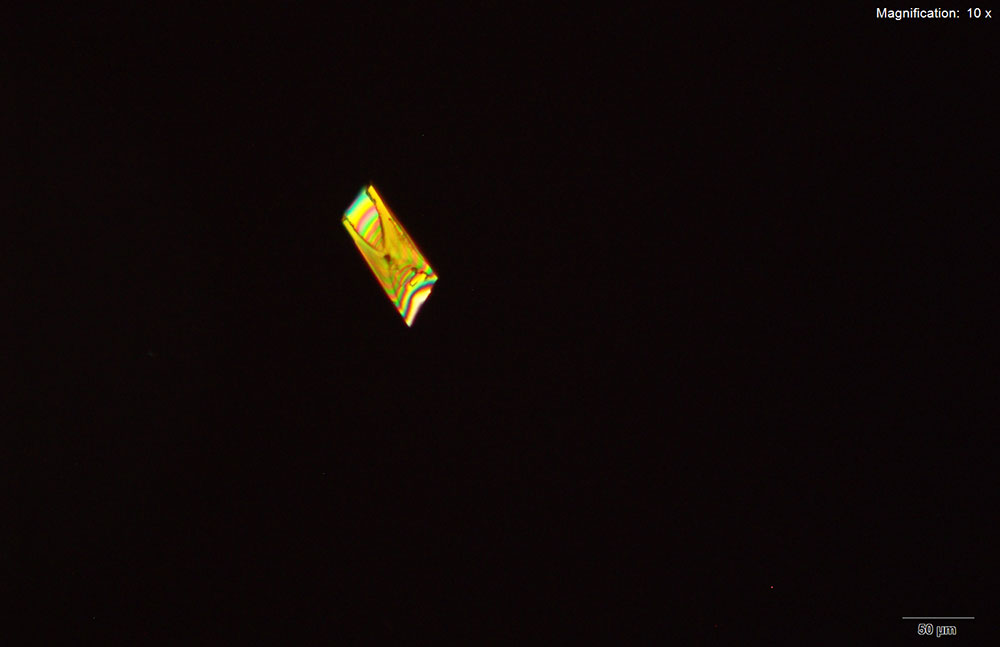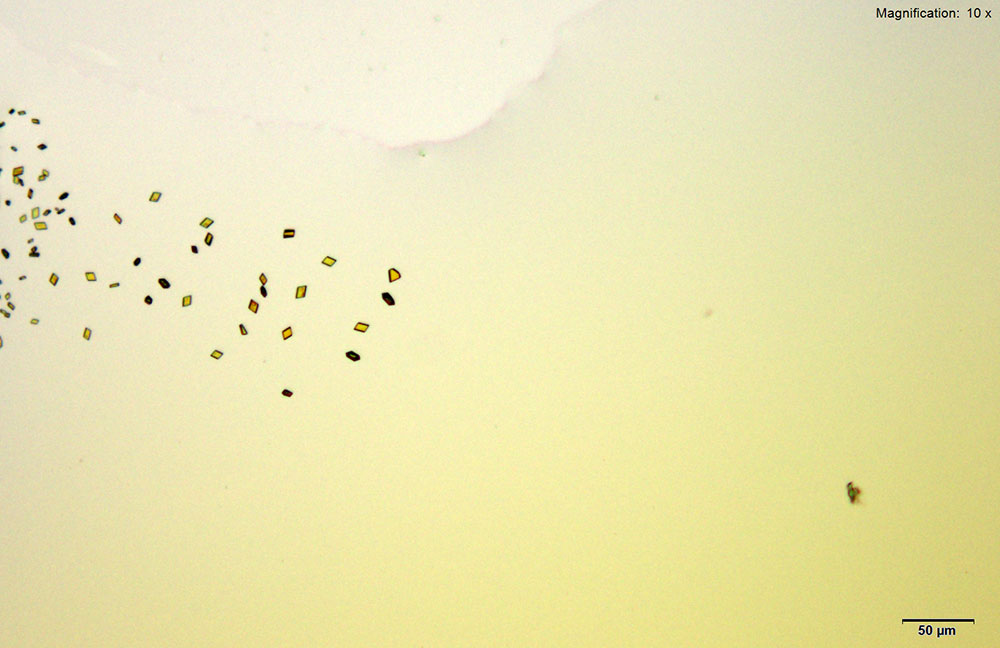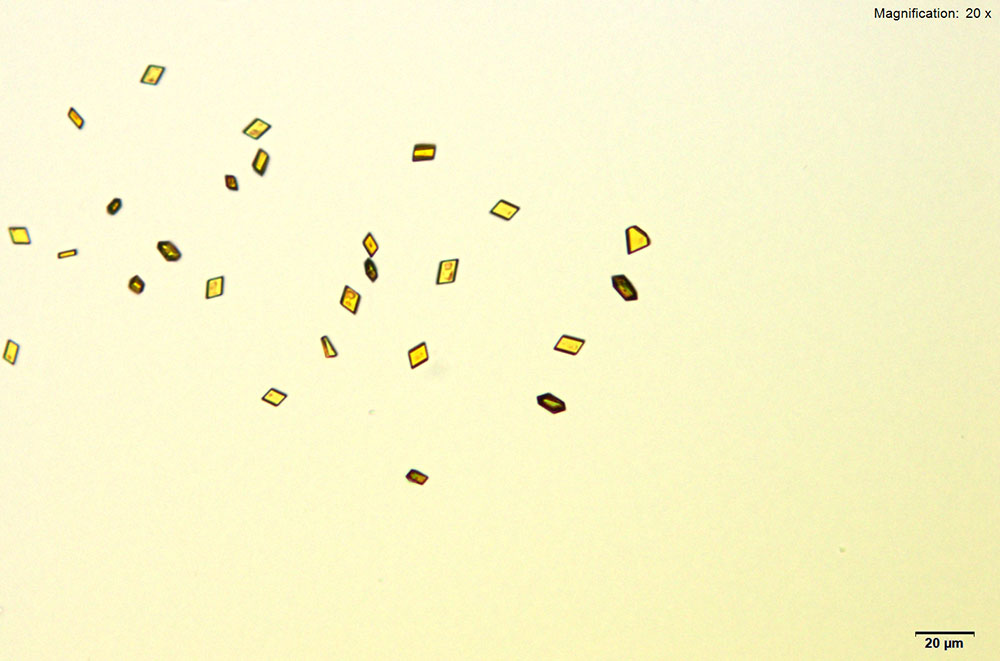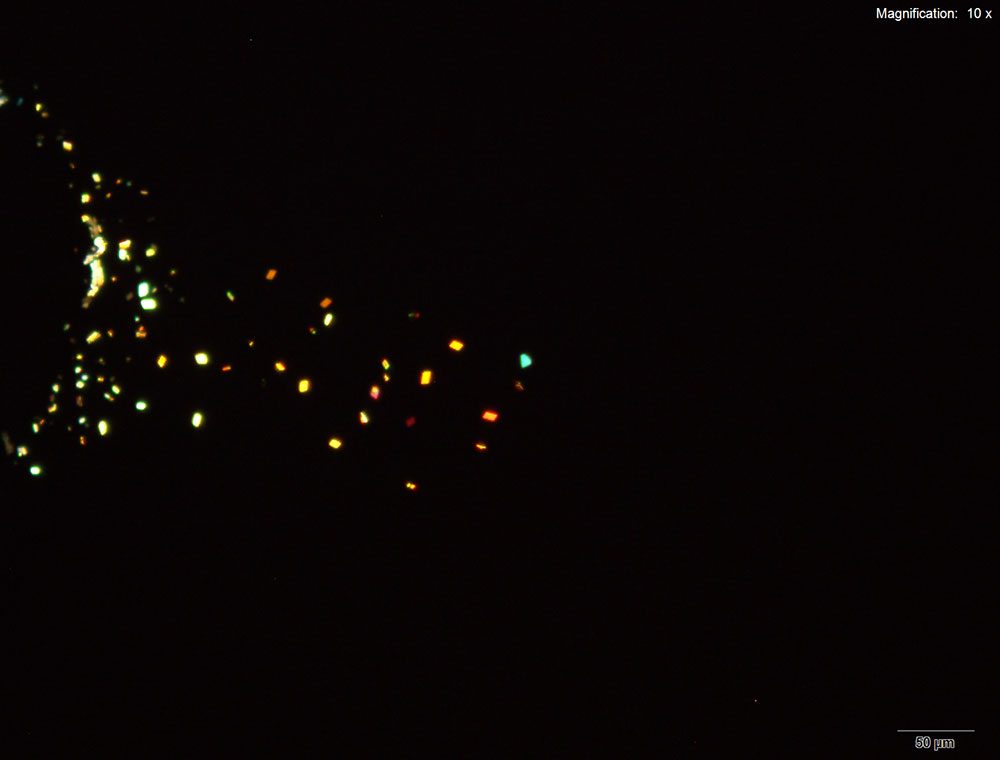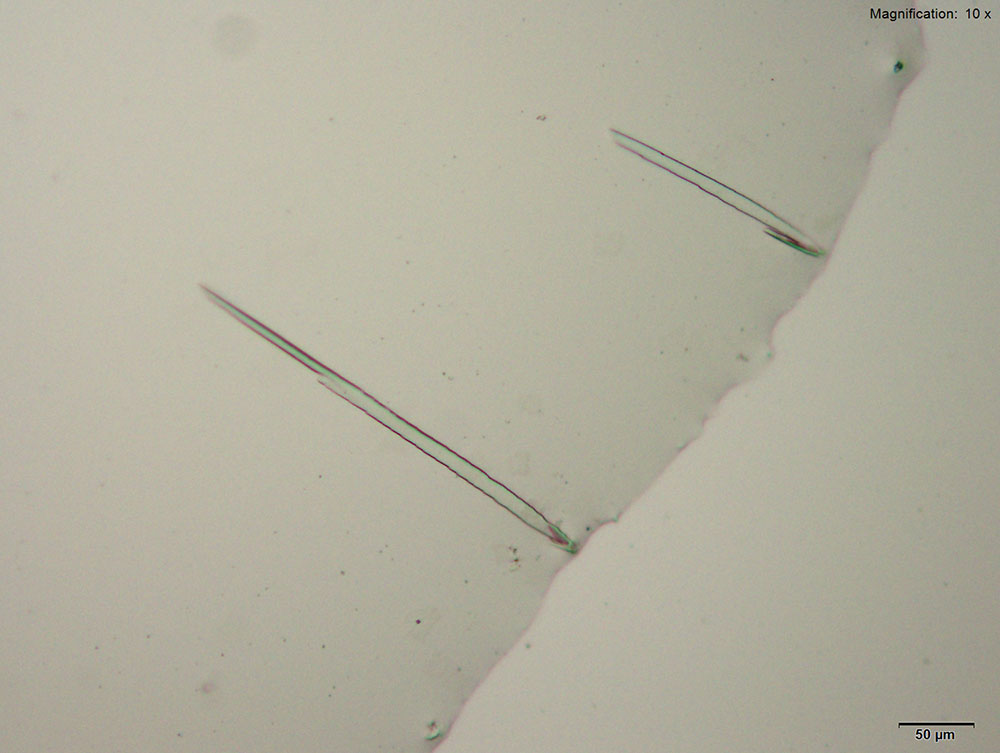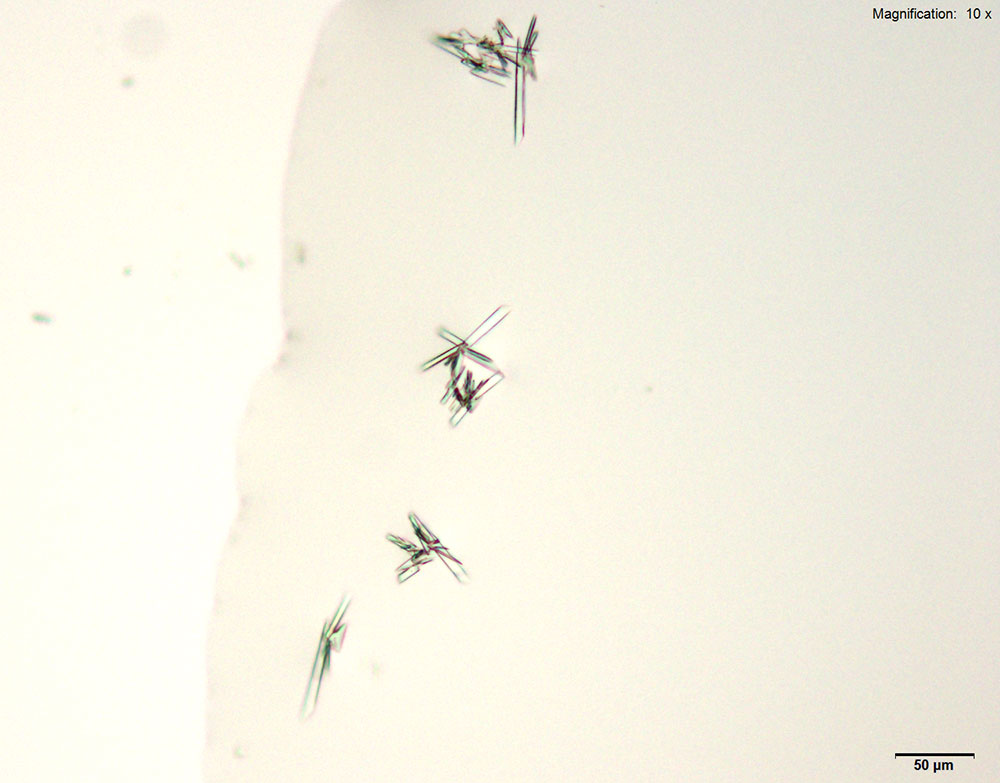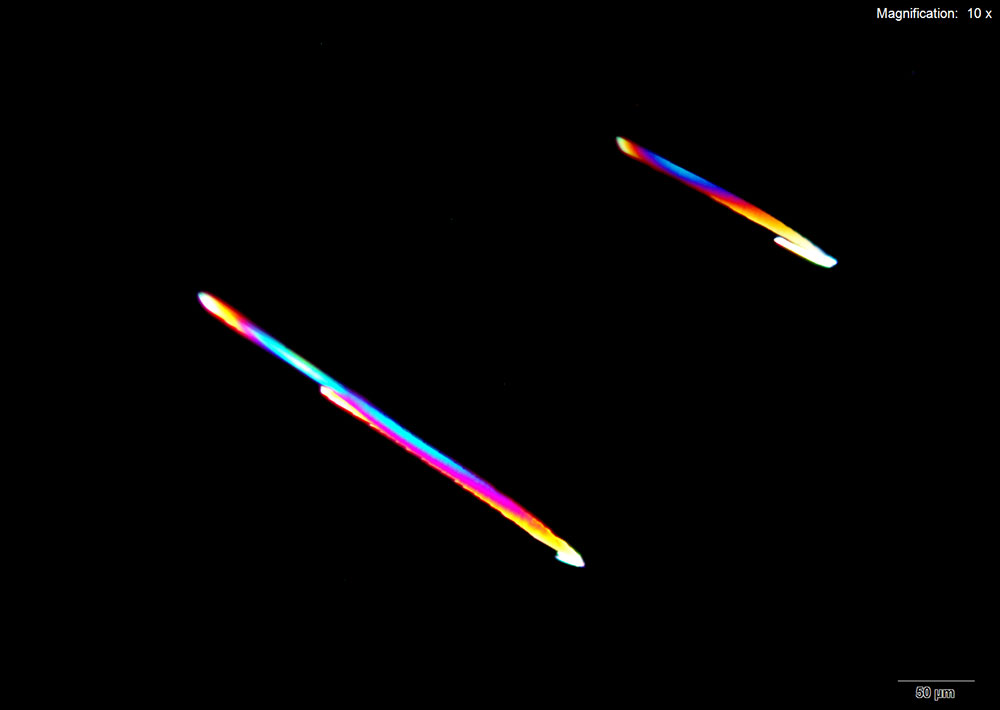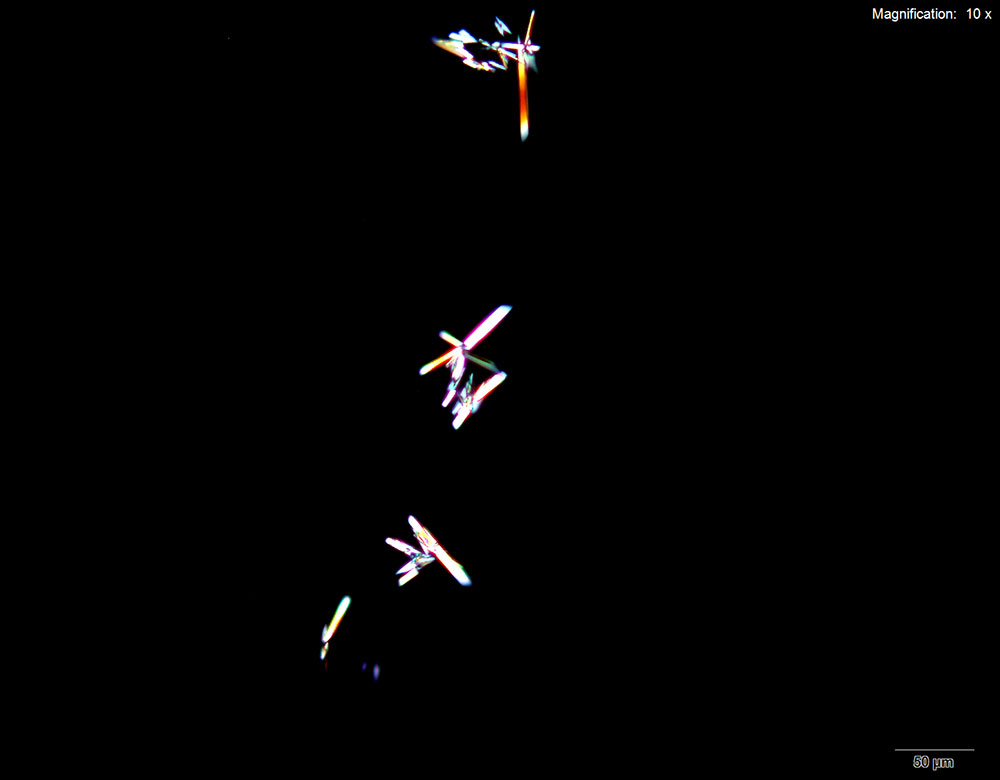Bromo-DragonFLY

5% Aqueous HAuCl4
Bromo-DragonFLY in 10% hydrochloric acid gives small brown branched combs. These structures are best observed under crossed polars or higher magnifications. The crystals take 15 minutes to grow after reagent addition with Bromo-DragonFLY amounts less than 10 μg.
IR Spectrum - 5% Aqueous HAuCl4
5% HAuCl4 in 1:2 concentrated H2SO4: H20
In acidic gold chloride reagent, Bromo-DragonFLY, gives reddish brown rectangular flat plates and small feathery crosses. These two crystals are concentration dependent and the plates are most commonly observed. They grow abundantly and are very bright under crossed polars.
Platinic Chloride (H2PtCl6)
Bromo-DragonFLY in aqueous and acidic solutions, gives characteristic thick, yellow, rectangular prisms. The prisms grow individually and with straight edges but can have uneven growing ends. The size of the prisms is concentration dependent and at lower than 5 μg of the substance the prisms grow very large. The platinic chloride reagent is the best reagent for Bromo-DragonFLY.
Platinic Bromide (H2PtBr6)
Crystals observed for Bromo-DragonFLY with platinic bromide are somewhat similar to those observed with platinic chloride. Short, thick, yellow, tablet-like prisms are observed. Variations to the prisms include pyramids and shards.
Mercuric Chloride (MgCl2)
Mercuric chloride reagent gives colorless, long, flat blades that grow into the drop from the edge of the drop. When the blades grow in the drop, they grow as loose clusters of short blades. Both forms of the crystal grow quickly and are readily observed under brightfield and crossed polars.

